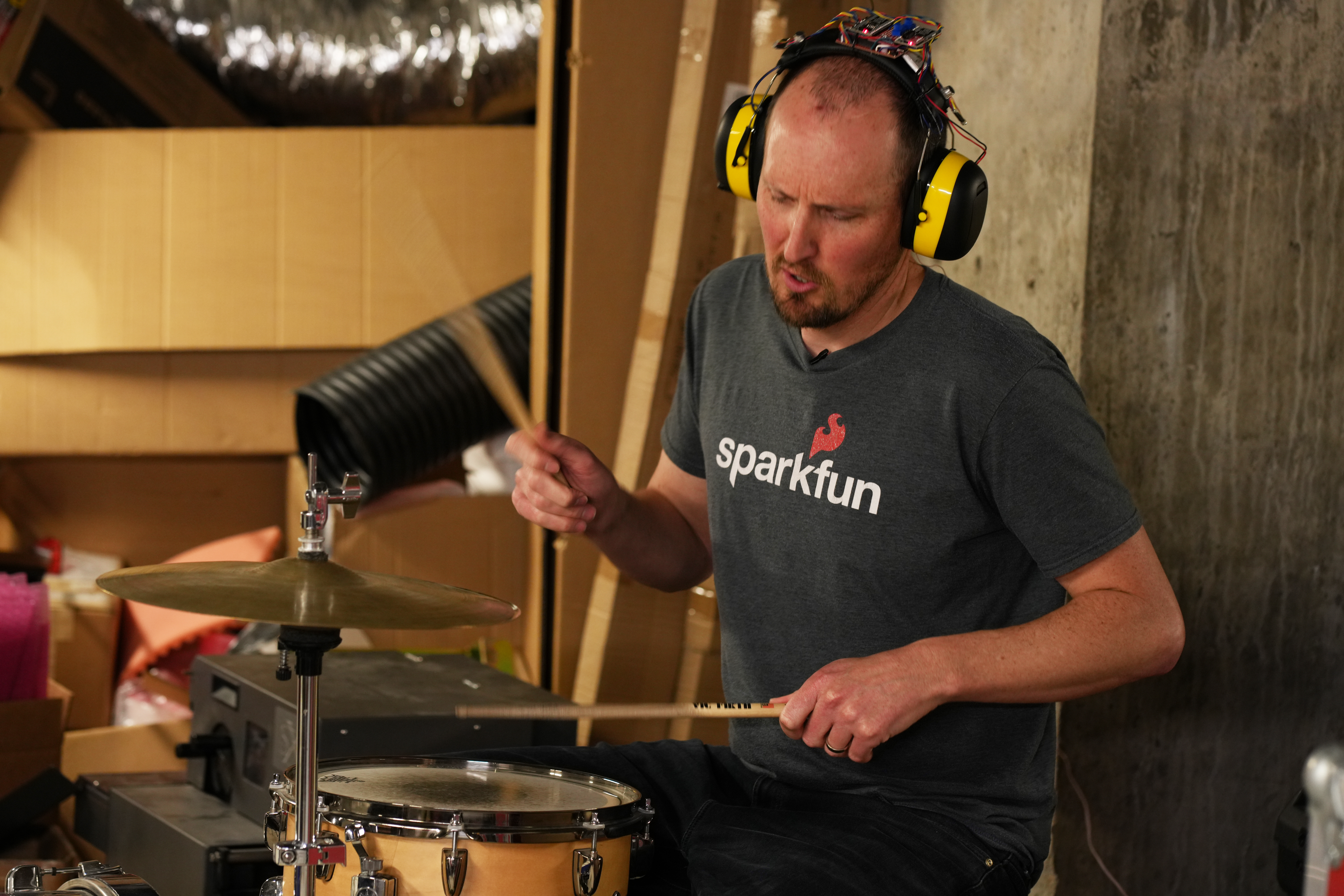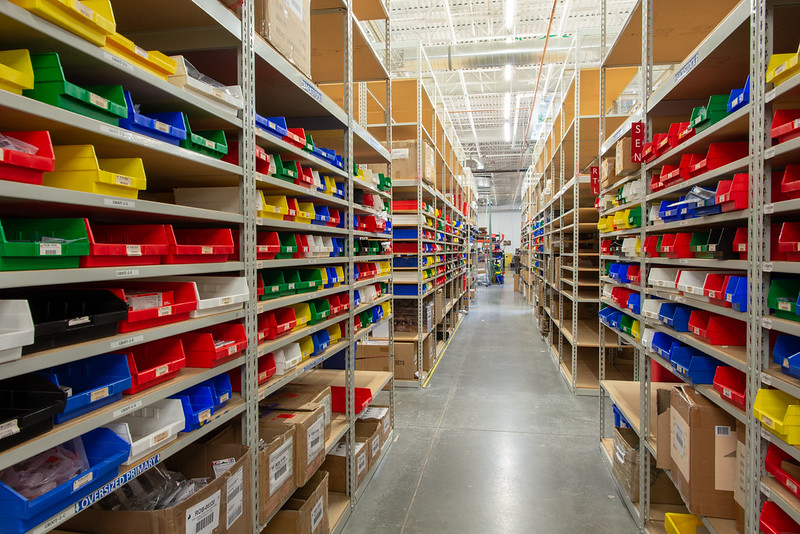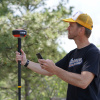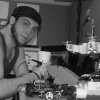SparkFun is 20 years old this year! We're lucky enough to have a bunch of employees that have been around for over 10 of those years, and we wanted to share their reflections on their time here with you. Today you'll be hearing from Pete Lewis.
Tell us about your background.
I have worn many hats at SparkFun over the past 15 years, and I have thoroughly enjoyed them all. It has been both an honor and a privilege to work on such fun and challenging projects alongside such wonderful people. I am proud of and thankful for the current opportunity to work as Senior Engineer!
I mostly grew up in Lake Tahoe, NV, where I gained a great appreciation for the outdoors. When I wasn’t snowboarding or wakeboarding, I was building, flying, crashing and fixing remote-controlled model airplanes. This is where I was first introduced to servos, wiring, batteries and robotics. I was pretty hooked on being a maker pretty early on.

I started my college education in Huntington Beach in Southern California. I was focused on music composition and sound engineering. I then hopped over to Cal-State Long Beach, and continued my general music studies but also joined the choir and got more into jazz guitar. I then finished up my music degree with a focus on voice at CU Boulder.
What brought you to SparkFun?
I had just finished my music degree at CU. I was playing in my band, giving private guitar lessons, and working at an art gallery. A friend of mine was working as a mechanical engineer for a new electronics company and he let me know that they needed assembly technicians. I thought I’d give it a try and was immediately hooked.
What's your favorite project you’ve worked on at SparkFun?
That’s a really tough question! While working somewhere for so long, you really can take on a lot of projects. After my first week at SparkFun as an assembly tech, I immediately started designing my very first PCB. I followed the SparkFun tutorials (at the time, basically just blog-post style tutorials written by Nathan), and learned how to use the free version of EAGLE. In addition to helping me layout the board and avoid fatal newbie mistakes (no ground pour, derp!), the engineers even let me put my design onto an “engineering panel”, so I could get a copy of my design for free - holy cow!
The project I was ultimately shooting for was to design my own headphone amp with a limiter built in. I had to start somewhat simple with just the op amp to drive my headphones (or more specifically, in-ear monitors). Through many late nights of soldering and hacking, I eventually got my headphone amp to work. I then started looking at more advanced audio circuits and created an analog limiter. This was the start of what later became my own business called, Rock On Audio, specializing in personal monitoring sound systems for musicians.

I still continue to tinker with audio projects. Recently, I designed a digital audio converter board for SparkFun. As with most new product designs, we engineers are lucky enough to get to try out the new tech on a project, and so I immediately wanted to use this new breakout board in an audio project. I used it to create a set of headphones with ambient room mics I can use safely while playing extremely loud drums.

So 15 years after my first op amp design, I’m still playing around with custom audio systems. Always a good time to break out the soldering iron and create something new!
What's the coolest thing you’ve seen a customer make with our products?
I really love the puppetry and robotics that Mario the Maker Magician does. He came to SparkFun many years ago to do a talk on how he creates his stage props and share how he uses a lot of SparkFun parts to make his magic happen. After the first couple minutes of his presentation, I remember thinking to myself, “Wow, this is one of the coolest ways I’ve seen our tech used!”
These days, Mario is touring the US and even some of Europe. If you get the chance to see his show, I highly recommend it. You will laugh, cry, and totally be amazed! And if you are an engineer and/or maker, then you will be constantly thinking, “how the heck??!!”.
Who is SparkFun?
SparkFun is a group of people that work to enable engineers, both new and experienced, to get to their design destination faster. A lot of times I say, “We provide shortcuts”, but I don’t really like how the word shortcut sometimes means that you miss out on something.
Yes, there is a lot of value in failing yourself. And yes, there is a lot of value in understanding the nitty gritty details of a system, but those two things can sometimes be major hurdles toward your end goal. And even with the tools we provide, both hardware and software, you will surely hit plenty of hurdles and other problems that will use up plenty of your dev time.
I like to think that our documentation will also encourage you to go and read about the nitty gritty details. I suppose it’s just a balance. You can go as far down any rabbit hole as you wish, and if it sounds interesting and you are learning how something truly works or the long history behind some known technology that we take for granted, then go for it!
I also still believe that if you can get your project up and running faster, and have a lot of fun on your way, you will eventually understand the fundamentals necessary to troubleshoot the crazy unknown issues you will surely face at some point during hacking.

How has SparkFun evolved during the time you’ve been here?
In the very early days, SparkFun tended to be a resource more for hobbyists. Over the past four or five years, we have been leaning towards working with our B2B (business-to-business) sales, partnering with other major companies like DigiKey, Mouser, u-blox. The risks are a bit higher with the larger scale projects, and so much more effort is taken to avoid mistakes. This can cause some projects (especially the more complex designs) to have a much longer development phase. But a little more time up front can save a lot of time later.
Even in the early days, we always did our best to avoid mistakes, but often were moving so fast that there wasn’t time to fix something properly, and so a band aid was used and we moved on. It was great to see SparkX form and continue to explore new ideas with rapid pace, with much less risk involved, fearless of failure. That was a major resurgence of the original mindset of SparkFun, which was a bit more like, “throw it at the wall and see what sticks”.
One thing that has remained constant is that we have always been supporters of the open-source community. It is a wonderful thing to see so much participation in trouble-shooting. With firmware it is very visible on GitHub (thank you for all the issues and pull-requests everyone!!), but it is also happening on our forums and with our tech support team.
What's your favorite spot in the building?
The rooftop. Love the view of the mountains. But I also like production. I especially like watching the pick-n-place machines fly. Oh so many little parts flying onto the paste. Oh, and then there’s the inventory. I do like wandering the inventory aisles. I help collect all the hard-to-recycle plastics each week, and so I take a big roller cart through every aisle of inventory to empty all the HTR plastic bins. But while I do that, I usually peer into some of the parts boxes. I love seeing all the buttons, LEDs, wiring harnesses, PCBs. They inspire me to think outside the box and make me want to create new things.

What was your first day like?
After quickly saying hello again to the guy who hired me, Matt Bolton, I was immediately assigned a desk and introduced to the production manager, Abe. He gave me a folder that included a couple printed out documents: an assembly sheet and a bill of materials. On the bottom of the assembly sheet I read a long folder directory path that ended with “SerLCD.brd”. I though, “Hmmm… I wonder what that means?” He showed me over to the inventory to grab parts. This consisted of a roller rack with green bins on it, holding the bare green PCBs, and some wire-style shelving with lots of boxes and reels. I wasn’t going to do any SMD population today, that was for day two. For my first build on my first day, I was going to be soldering on the PTH header pins that went into the Serial LCD backpacks.

Abe told me to focus on getting the pins fully inserted and make sure they are straight and flush. He also told me to make sure all the solder joints have good fillets. I didn’t know what a fillet was, but as soon as he described it as a nice looking skateboard quarter pipe, I knew what he was talking about. I think I maybe made twenty or so units, and then got to test them. I remember being pretty excited that about half of them worked. The test consisted of holding a delicate little programmer with tiny little pins into place and then running a command in a terminal window to watch a ton of text fly across the screen and look for the word “success”. I had never used a command terminal before, and I remember feeling pretty excited to see the “code” that makes a program work.
After doing just twenty boards, my mind was already tinkering with ideas on how to improve efficiency. I kept a notebook by my side, to easily write down any ideas that came to mind while working on assemblies. About a year later, I wrote my first blog post about an idea I had to tweak the design to hold the PTH header pins in place perfectly.

How would you describe SparkFun's culture?
Friendly, helpful, interested, accepting, welcoming.
What is the best part of the work you do?
Being creative and innovating new solutions. It’s always amazing to me how most new projects start out with a datasheet (which should have all the answers, right?), but then you find yourself having to create a unique solution from scratch for some unforeseen issue that comes up during prototyping on your specific use case. Ah the joys of engineering.
So I guess what I’m saying is, I love the “Aha! I’ve got it” moments. Oh yeah, and annoying my boss with scope creep. I love exploring the infinite possibilities. And yeah, I understand, we can’t add all the features to every dev board, but hey, who knows where this board is going to be used??!! We should probably break out just a couple more usable GPIO pins!
What's your favorite memory of being a SparkFan during these past 20 years? Let us know in the comments below, or tell us on Twitter, Instagram, Facebook or LinkedIn.











